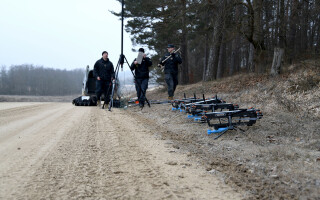Kontron

Kontron announces availability of COBALT S1901 integrated mission computer - News
October 11, 2021AUSA ANNUAL MEETING & EXPOSITION -- WASHINGTON, D.C. Kontron has announced that its newest integrated mission computing platform, the COBALT S1901, is now available for customer shipments and will be showcased at the AUSA show this week.
Radar/EW
Featuring 11th Gen Intel SoC technology, Kontron VX3060-S2 takes rugged high performance processing, neural network acceleration and powerful graphics OpenVPX to next level - Press Release
September 23, 2021Ismaning, September 23, 2021 - Kontron, a leading global provider of IoT/Embedded Computing Technology (ECT), commences first deliveries of its high performance VX3060-S2 Blade PC, and is inviting developers to apply now for early access to Kontron’s industry-first Blade PC. Based on 11th Gen Intel Core processors, this underscores Kontron’s strong partnership with Intel, enabling the company to be first to market with a powerful and versatile space-saving 3U VPX single board PC.







